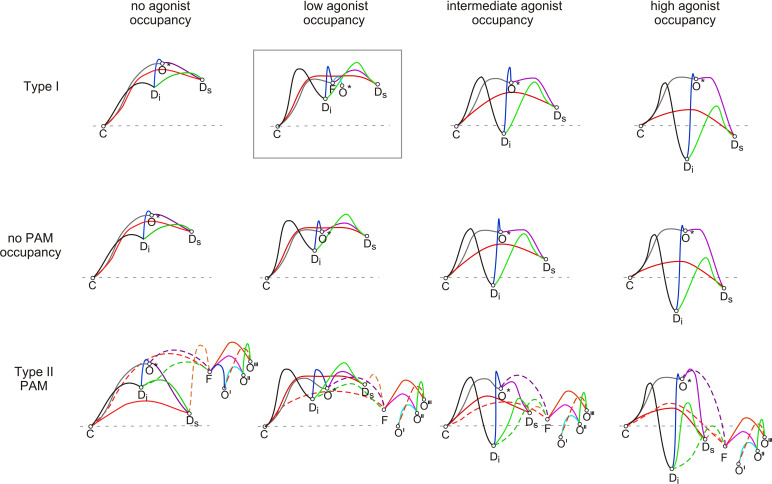Fig. 6.
Schematic illustration of energy landscapes for the conformational states associated with α7 activation, desensitization, and modulation [adapted from (Quadri et al. 2019) and (Williams et al. 2011b)] illustrating their relative energy levels and transition rates. Under equilibrium conditions, the distributions of receptors into the resting closed, open, and desensitized states will be determined by the relative free energy of the states (represented by vertical displacements). Dynamically, the transition rates between the states will be inversely related to the log of the energy barriers between the states. In the absence of any PAM (center row), the primary effect of agonist binding is to shift the equilibrium between the conformational states from the resting closed (C) state toward the desensitized states Ds and Di with a small probability of opening only at relatively low levels of agonist occupancy. The shallow energy well assigned to the open state (O*) is consistent with the brief opening observed in single-channel recordings and the high energy barriers into the O* state consistent with the low Popen observed. With the binding of a type I PAM (upper row), the primary effect is to deepen the well for the open state and to permit repeated transitions between the threshold activation (Flip) state and the open state, consistent with observations of single-channel currents in the presence of the type I PAM (Andersen et al., 2016). Note that this effect is only seen at low levels of agonist occupancy (in box). In the presence of the type II PAM (lower row, the Ds state is connected to another Flip state that then permits many reopenings to full and subconductance open states (O', O'', and O''').

